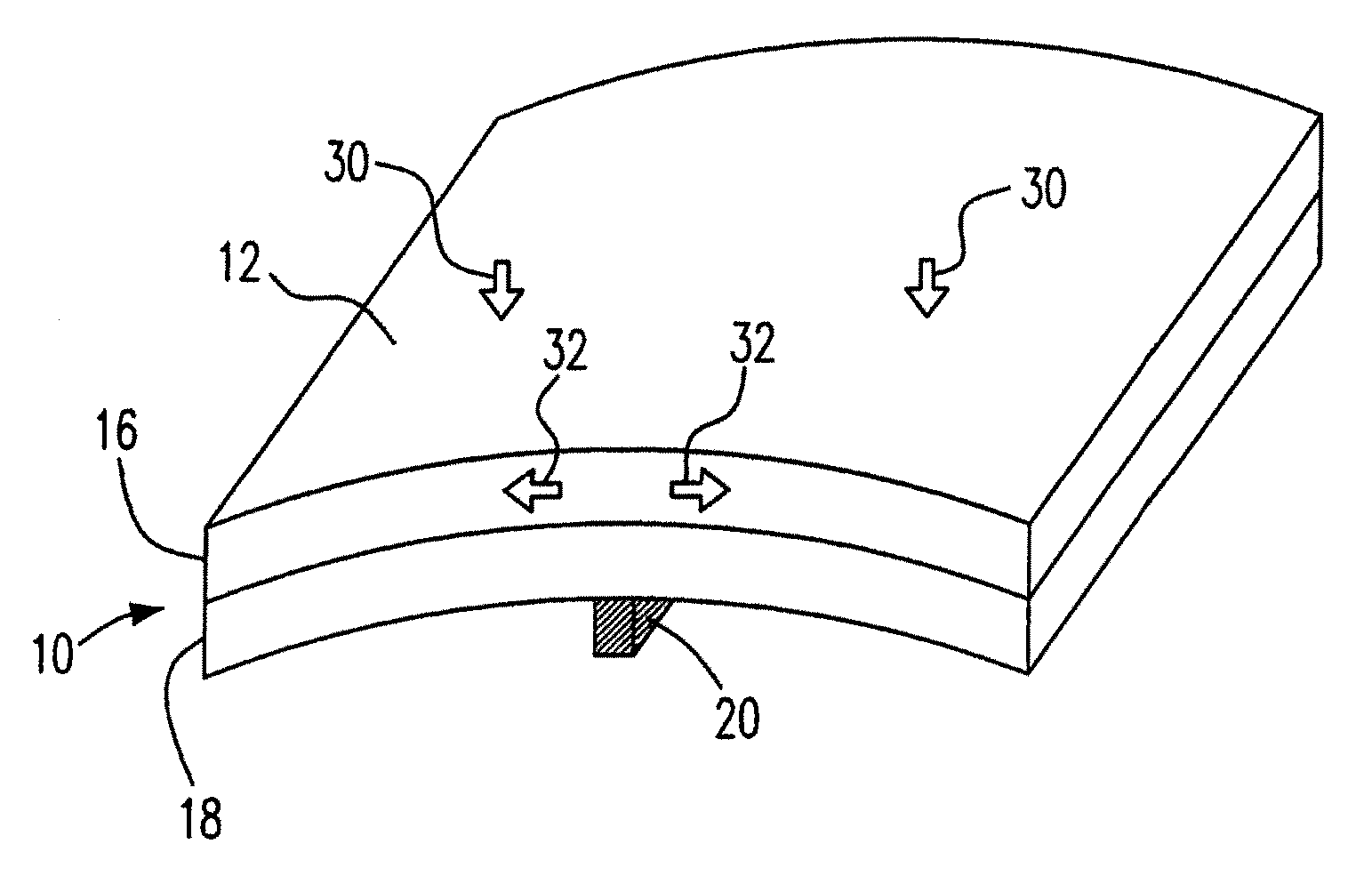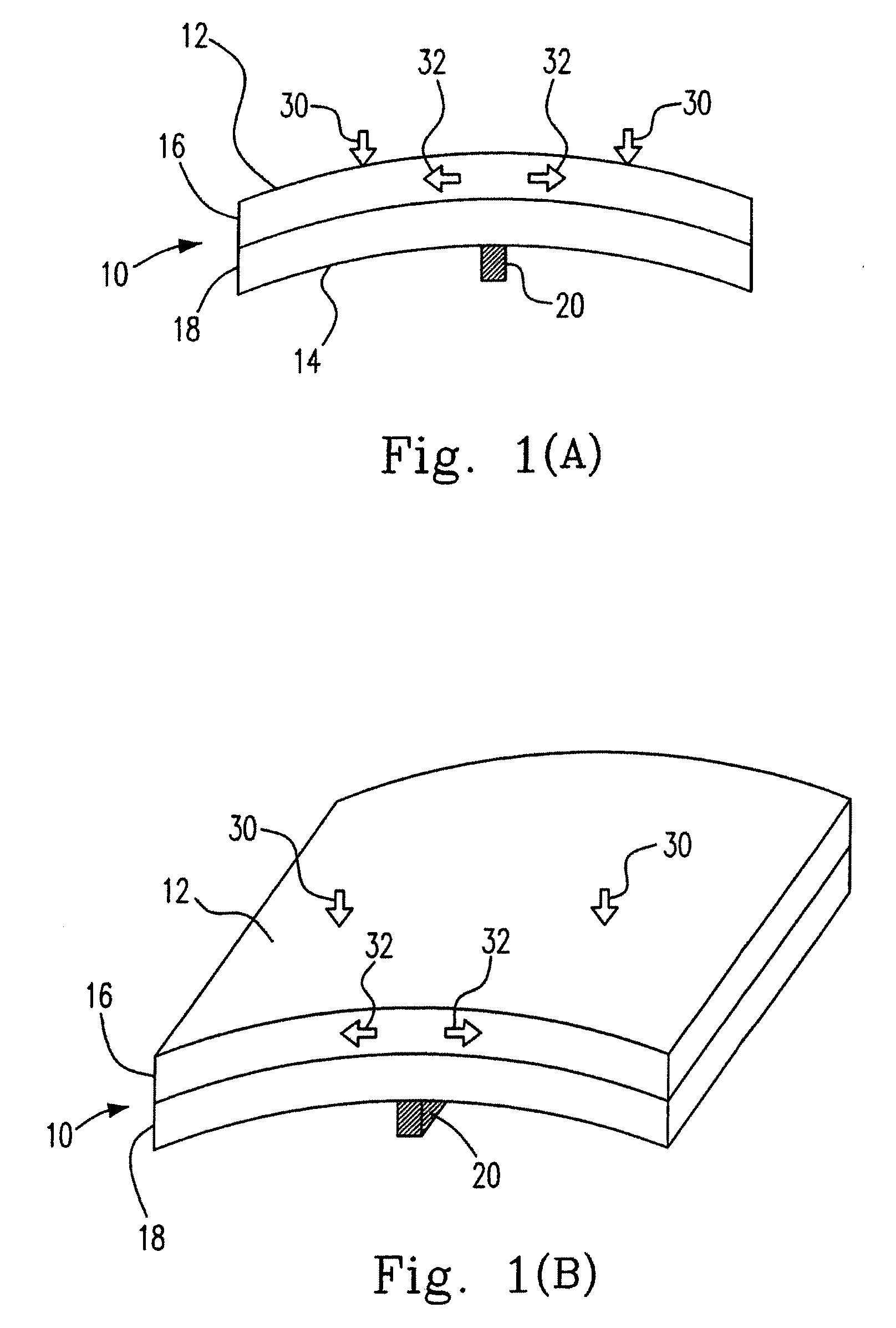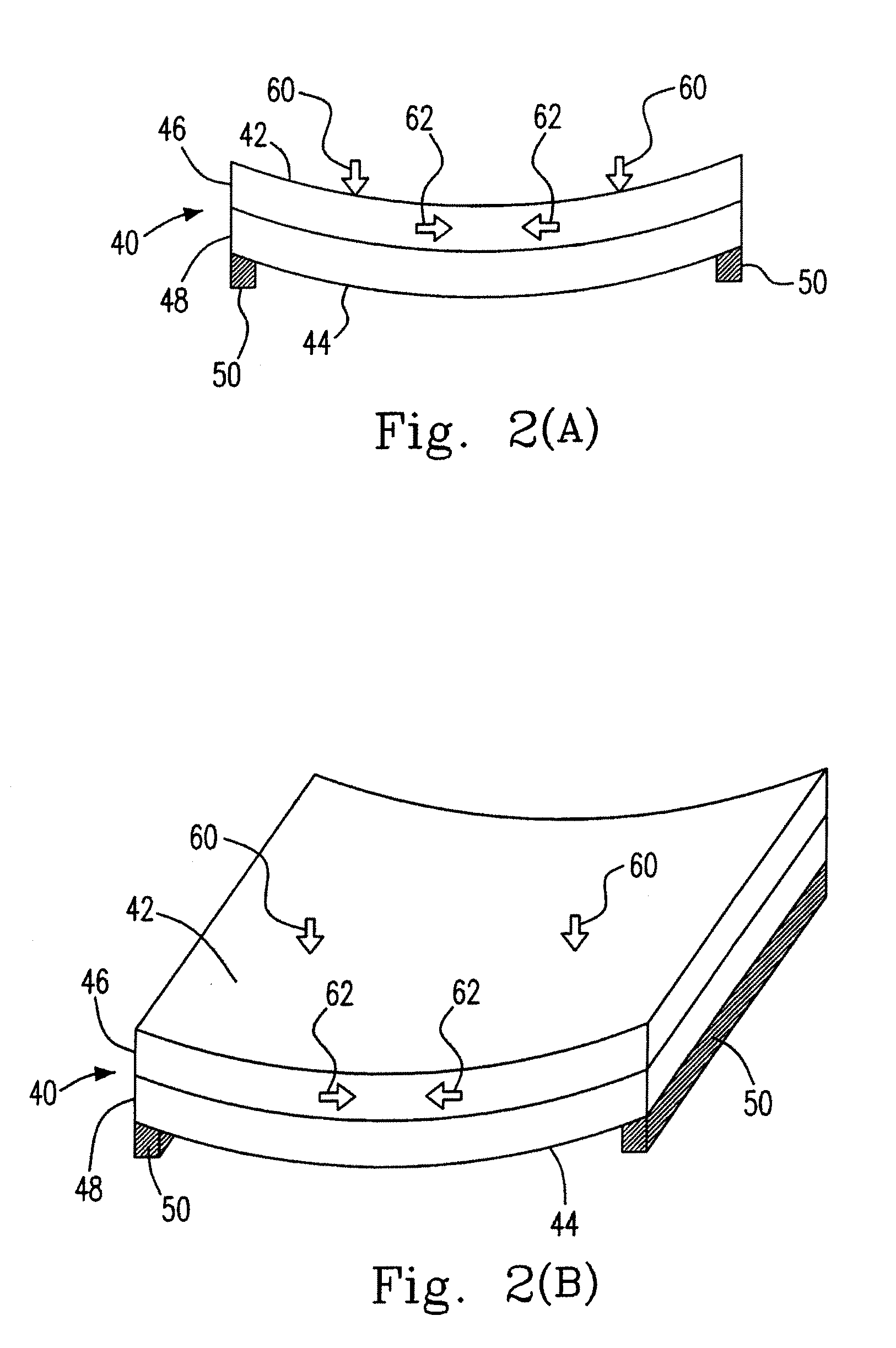Structure And Method Of Solar Cell Efficiency Improvement By Strain Technology
a solar cell and strain technology, applied in the field of solar cell efficiency improvement, can solve the problems of increasing the price of fossil fuel, ineffective conversion efficiency improvement of amorphous silicon thin layer, and difficult cutting and manufacturing procedures of polycrystalline silicon than those of single crystalline silicon, etc., to achieve the effect of improving photoelectric conversion efficiency, and generating a tension in the solar cell
- Summary
- Abstract
- Description
- Claims
- Application Information
AI Technical Summary
Benefits of technology
Problems solved by technology
Method used
Image
Examples
first embodiment
[0035]Please refer to FIGS. 1(A) and 1(B), which schematically illustrate the uniaxial tensile strain generated from the implemented uniaxial stress on the solar cell in accordance with the present invention. In FIGS. 1(A) and 1(B), the solar cell having a P-N junction structure is adapted. For the convenient illustration, the solar cell is divided into the upper part 16 and the lower part 18, and a gasket is disposed on the second surface 14. While a downward uniaxial stress 30 is applied on the different sides of the first surface 12 according to the gasket 20 as the axis, the gasket 20 actually provides an upward supporting force, and the uniaxial stress 30 and the support force do not excess the critical value of fragmentation of the solar cell 10.
[0036]Please refer to FIGS. 2(A) and 2(B), which schematically illustrate the uniaxial compressive strain generated from the implemented uniaxial stress on the solar cell in accordance with a second embodiment of the present invention....
third embodiment
[0037]Please refer to FIGS. 3(A) and 3(B), which schematically illustrate the biaxial tensile strain generated from the implemented biaxial stress on the solar cell in accordance with the present invention. In FIGS. 3(A) and 3(B), it is assumed that the squared solar cell 70 with the P-N junction structure is provided, and 76 and 78 are denoted as the upper part and the lower part of the solar cell 70 respectively. The bar-shaped gasket is substituted for a cone-shaped gasket 80 to be mounted on the center of the second surface 74. The downward biaxial stresses 90 are implemented perpendicular on the distinct four corners of the first surface 72 of the solar cell 70, and the outwardly-radial tensile strains 92 which is centered by the cone-shaped gasket 80 are formed interior the upper part 76 of the solar cell 70. This tensile strain 92 also can be named as the biaxial tensile strain.
[0038]It is known that the gasket is not limited in the bar-shape, cone-shape, circular shape or ot...
PUM
 Login to View More
Login to View More Abstract
Description
Claims
Application Information
 Login to View More
Login to View More - R&D
- Intellectual Property
- Life Sciences
- Materials
- Tech Scout
- Unparalleled Data Quality
- Higher Quality Content
- 60% Fewer Hallucinations
Browse by: Latest US Patents, China's latest patents, Technical Efficacy Thesaurus, Application Domain, Technology Topic, Popular Technical Reports.
© 2025 PatSnap. All rights reserved.Legal|Privacy policy|Modern Slavery Act Transparency Statement|Sitemap|About US| Contact US: help@patsnap.com



